The power of things that fall outside of society
Hello everyone, how are you all? This is Tanaka from GRIDFRAME.
<The power of things that fall outside of society>
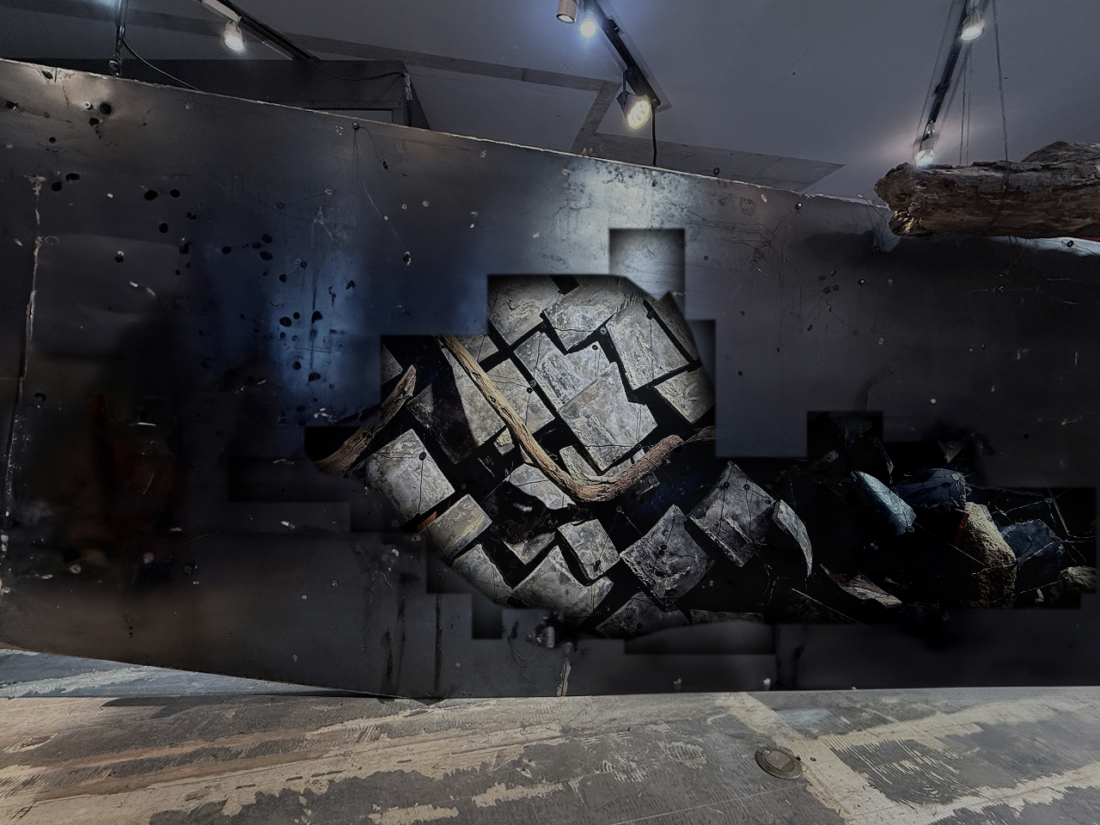
GRIDFRAME has been in business for 27 years now, and I’m reminded that the fact that the company was founded in 1998 and continues to exist today is largely due to efforts by people other than myself. I’m grateful for all the encounters I’ve had so far: customers who have high expectations for our uniqueness, kind-hearted staff who are willing to challenge new things with us, partner companies who patiently work with us, and the many people who watch over and support us.
GRIDFRAME’s uniqueness lies in its consistent approach of actively incorporating “things that stand out from society” into its spatial creations, from the “GRIDFRAME system sandwiched between scrap iron” to “Chain of Creativity” and “SOTOCHIKU.”
There are many people in the world who are clearly “outcasts” in many ways, and I believe that even the most ordinary-looking person actually has something that makes them “outcasts.” If anything, I think that it is that something that makes them outcasts that defines them.
From the perspective of society, people are always incomplete and lacking something, but that is exactly what makes them so fascinating.
At GRIDFRAME, we don’t aim to create spaces that are perfect works of art. They are always incomplete, with something missing. Rather, we want our spaces to be like people. That’s why we tout an “80% complete space” as our ideal.

I believe there are two positive aspects to creating a space that is 80% complete while actively incorporating things that are out of the ordinary in society.
- The space has the power to inspire those who are feeling weak.
- It creates a space that is easy for anyone to enter.
Regarding point 1, I believe it is the polar opposite of “a space that has the power to heal the weak.” Until now, weak people have sought “a space that has the power to heal.”
However, in Ushitsu, a town devastated by the Noto earthquake, I witnessed firsthand that the power of the Abare Festival was clearly not a “healing power” but an “inspiring power.” There was a real sense of urgency that without this power, the people of Noto would not be able to take a step towards the future.
We at GRIDFRAME are proud to say that we know how to create a space that has the power to inspire those who are feeling weak, something that has never been created before.
Of course, we will be combining existing materials and construction methods, so we intend to create a space that has both the power to heal and the power to inspire.
Regarding point 2, by incorporating “things that fall outside of society” as materials, it is possible to eliminate or disrupt symbolic meanings, making it possible to create a space that anyone can enter.
In fact, I have had the experience of visiting scrap yards in the United States to collect materials, and I became convinced that the space of a scrap yard possesses these qualities.
As inclusive spaces become increasingly popular in the future, isn’t it very important to make use of these qualities of SOTOCHIKU materials?
<A tour of three NPOs>
For five days from Wednesday, June 25th to Sunday, June 30th, we traveled 2,000 kilometers to greet and introduce the activities of SOTOCHIKU to three NPOs that have helped us by donating the money we receive from the materials we receive from SOTOCHIKU.
The three NPOs are Creative Support Let’s in Hamamatsu City, Happo in Kitakyushu City, and Cocoroom in Nishinari Ward, Osaka City. Each supports different types of socially vulnerable people, but each conveys a rich inner life.
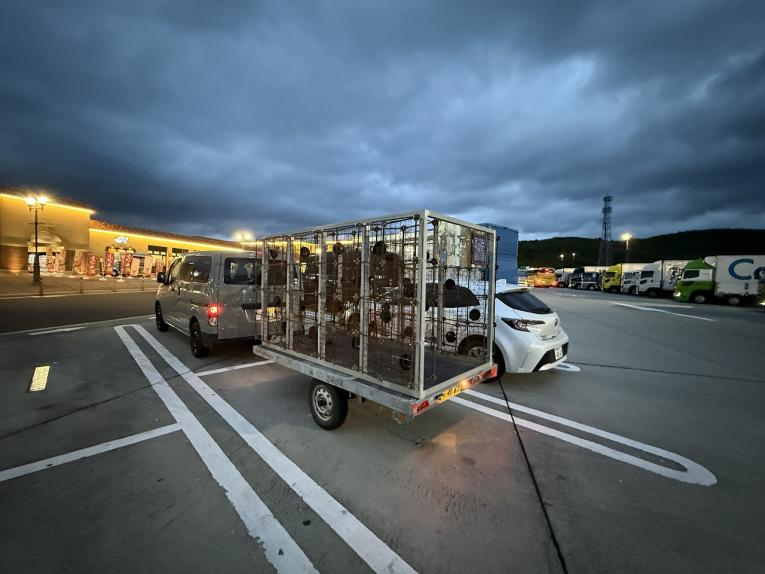
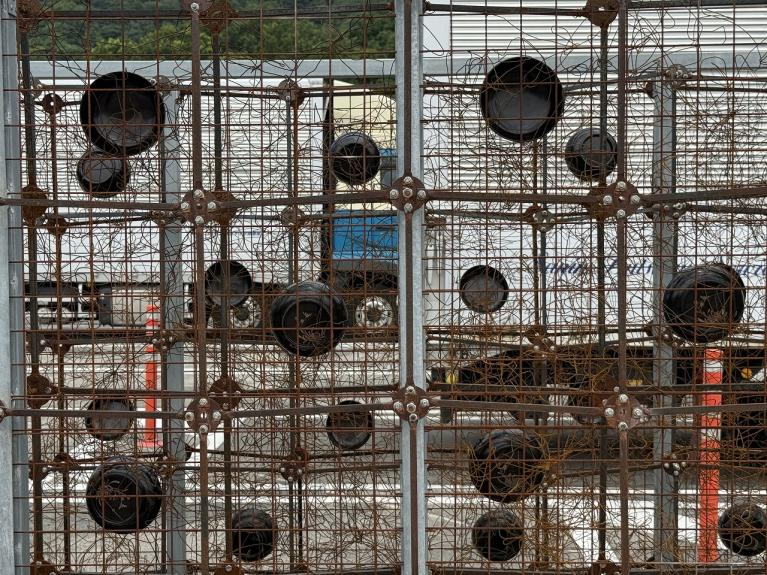
Traveling with a SOTOCHIKU trailer also gives you an opportunity to see the reactions of those around you.
Wajima lacquerware collected in Noto is set afloat on the grid frame of the trailer. The gold decoration on the lid gives it a subtle and elegant look. Lacquerware will fade if exposed to direct sunlight, but we hope to watch over it with admiration as part of the process of returning to the earth.
Additionally, the top of the gable roof that had fallen off in the earthquake was secured to the floor of the trailer with GF mesh and transported. You can see that tiles are stacked in layers, with mortar used to hold them together. Apparently, soil was used to hold them together in the past. The use of mortar instead was one of the reasons the roof collapsed this time.
Mortar is strong when there is no shaking, but during the earthquake it broke into pieces and rolled, further destroying the roof tiles on the slope. Because the roof was not easily repaired, even though the beams and pillars were intact at the time of the earthquake, the house became uninhabitable due to leaks, and it was forced to be demolished.
There are many traditional houses that have been demolished for the same reasons. By transporting this, I was able to explain the current situation in Noto to the many people I met.
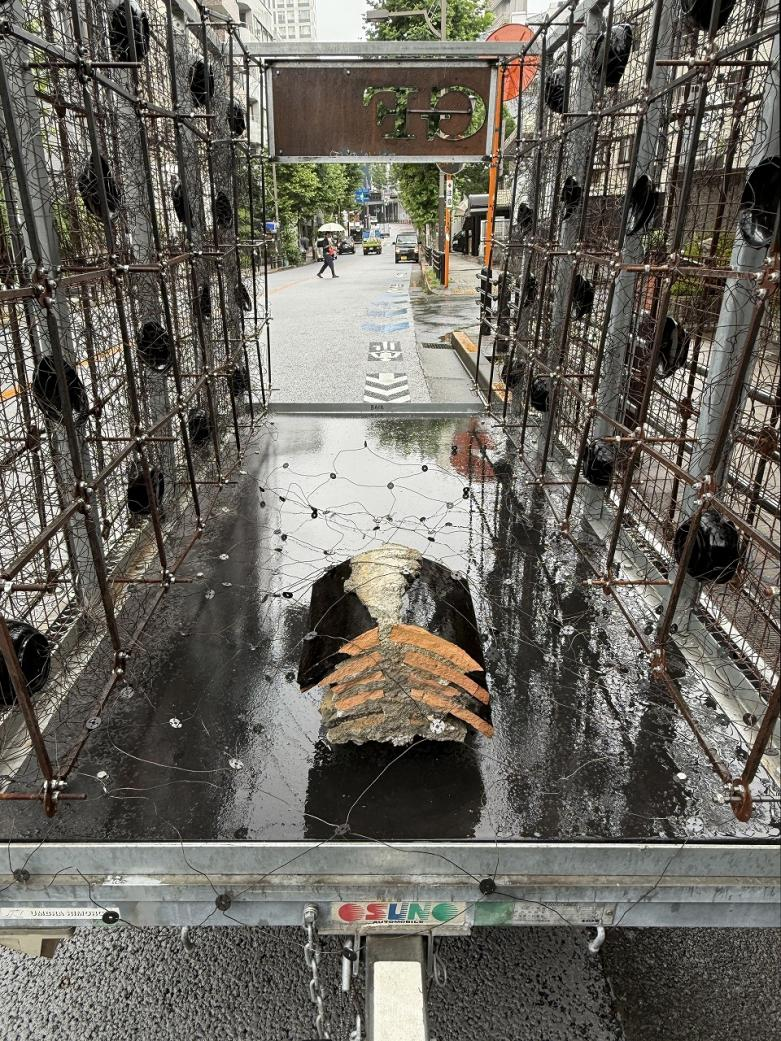
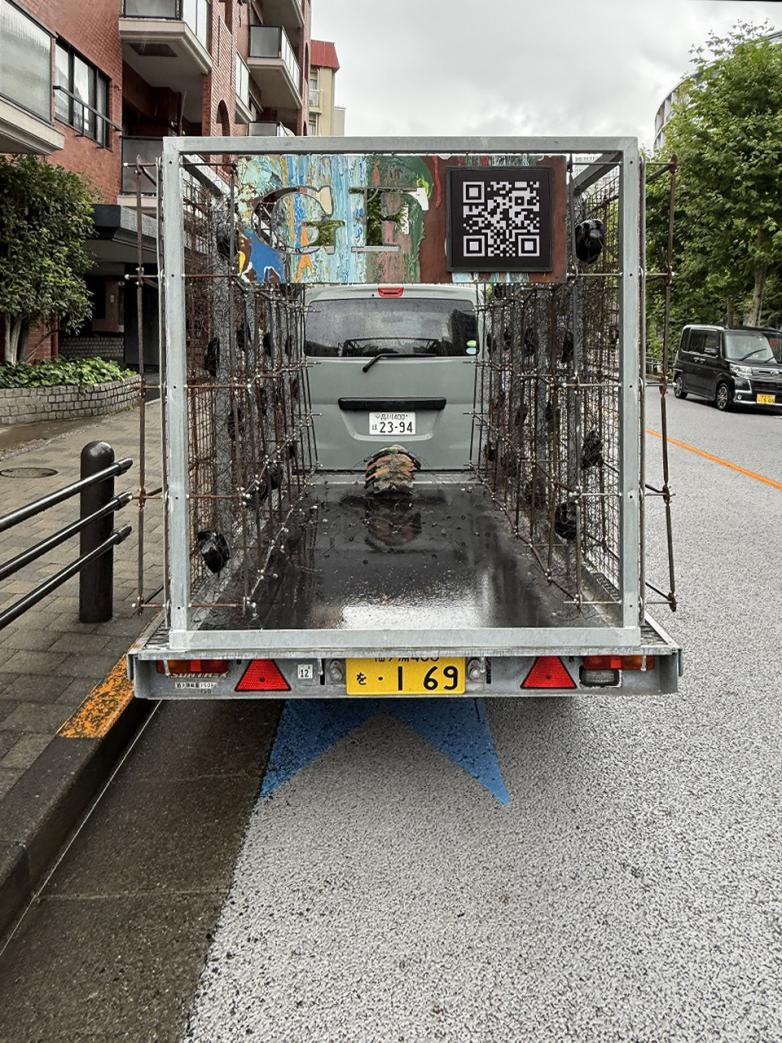
Now, in this issue of SOTOCHIKU Newsletter, we would like to introduce one of the three NPOs.
[Hoboku]
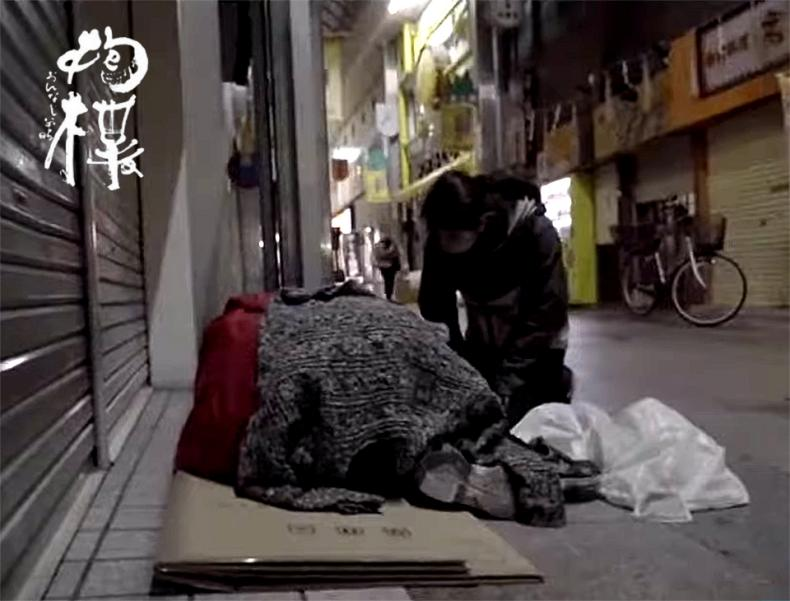

I first learned about Hobokku when I read an interview with Pastor Okuda in the magazine Kotonone, which I was given when I visited Sekine Mikiji at STUDIO COOCA, a welfare facility for people with disabilities in Hiratsuka.
It begins with, “A homeless man dies on the streets of Kamagasaki, Osaka, without anyone to look after him. Is there a God in this world?” This is what Okuda Satoshi wondered, and he became a pastor.”
He currently works as a pastor in Kitakyushu while supporting the homeless in their efforts to become independent, and his activities cover 27 areas, including child support, family support, rehabilitation support, nursing care services, and housing support.
Compared to other countries, it seems that many Japanese people have only family members to whom they can ask for help. This can be said to be a society that demands personal responsibility. Around the time of the Koizumi administration, a shift to a competitive society of personal responsibility and self-help efforts was touted, and this trend has accelerated even further. A society has been created in which people cannot ask for help.
Hoboku aims to create a society where people can say “Help me.” And now, we are trying to create just such a “town.” This is the “Town of Hope” project.
It’s a newly constructed three-story “town,” and I honestly believe there has never been a building with a more dreamy concept than this one. Anyone can enter, and they’ll be provided with a place to belong. And yet, on the first floor there’s a stylish, first-class restaurant.
“Anyone can join in.” I felt that this was the most important issue they were addressing.
“Town of hope” is a town where people who are otherwise excluded from the town can live.
SOTOCHIKU is a town where things that are otherwise excluded from the town can live.
That’s how I saw it.
As mentioned above, a space created with SOTOCHIKU can have the unique feature that anyone can enter, because external materials cannot be categorized. In other words, there are no constraints.
And perhaps we can support a space that can heal those who are weak and even inspire them with SOTOCHIKU materials.
We would love to help create a space that is a “town of hope.”
To convey this, I traveled 1,000 kilometers to Kitakyushu, pulling the SOTOCHIKU trailer.
It gave me a lot of confidence that my story resonated with everyone at Hoboku. I would be honored if I could share my vision and turn it into a concrete project.
<How will humanity survive?>
“I believe we are living in a time of great change, and I want to speak of hope.”
This is what ink painter Unno Jiro said, in response to an invitation to a discussion on his YouTube channel. The discussion focused on the big question of “How will humanity survive?” and involved a three-way conversation between Unno, art critic Sasayama Hiroshi, and himself. Art director Watanabe Yukiko was in charge of filming and editing.
I’m going to talk about how GRIDFRAME started and the path it has taken to get to where it is today, over the course of half my life. I hope you’ll take a look.
Mr. Sasayama was interested in the GRIDFRAME system and later sent me the following email:
・・・・・・・・・・
As I listened to Tanaka talk about grid frames, I was reminded of a passage in Gilles Deleuze’s Anti-Oedipus.
It is a section written on the theme of “the whole and the parts,” and the keyword is “partial object.”
By “partial object” (my own interpretation, relating it to the grid frame), you can think of it as each and every square of the grid that Tanaka sets up. And the “relationship between the whole and the parts (squares)” in the grid that Tanaka creates is thought of as “a part is not [a part of the whole], but the whole is one part as [a collection of parts].” Below, I will quote the phrases that came to mind.
(Omitted)
“The whole is produced. It is produced as a part beside the parts. This whole does not unify or totalize, but applies itself to these parts, creating strange passages between the disconnected vessels and creating transverse unities between the elements, each of which tries to preserve all its differences in its own dimension.” (Gilles Deleuze, Anti-Oedipus)
(Omitted)
I wonder if, by considering the meaning of broken things and scraps in these discourses, we can find a ray of light beyond the mountains of broken things in Noto and Gaza . I think Tanaka’s Sotochiku method can be seen as one practical approach.
・・・・・・・・・・
In addition, some expressions have been changed to make them easier for readers of SOTOCHIKU News to understand.
Instead of thinking that “there is a whole,” they think that “the whole is produced as a collection of parts.” The whole produced in this way is nothing more than “one part alongside the other parts.”
No matter how many parts you collect, you will never arrive at a true whole. Therefore, it is strange to start talking about the whole. If you start with the parts, you can “create various cross-sectional unities between elements that try to maintain all differences.”
What’s so great about this idea is that it represents a future in which those without power, whether they’re a small company like ours or an individual, can create a new world. It’s a new vision of the future in which “beings that are as close to zero as possible, but not zero,” as Sasayama-san put it, can rise again and again, no matter how many times they break down.
Is it possible that humanity has yet to see such a world? I would like to visualize this world.
In the next issue, we would like to continue to tell you about SOTOCHIKU’s various activities.
June 30, 2025 GRIDFRAME Toshiro Tanaka

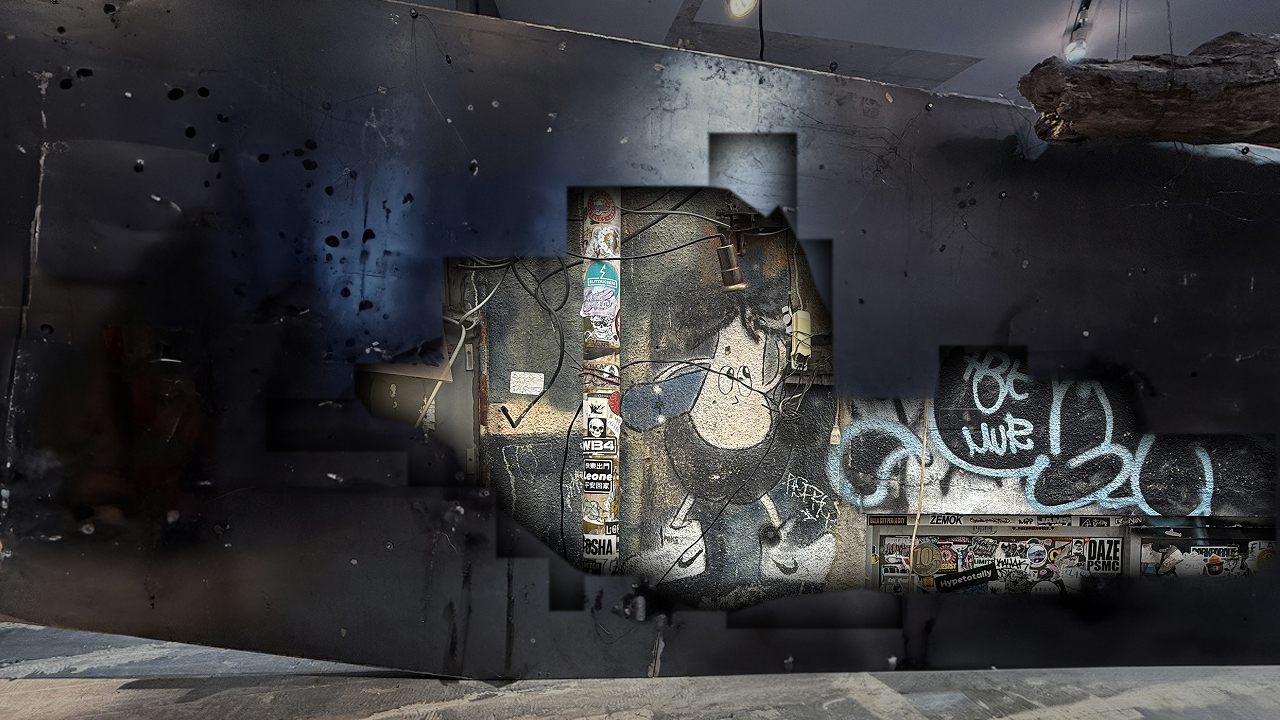
Comments are closed